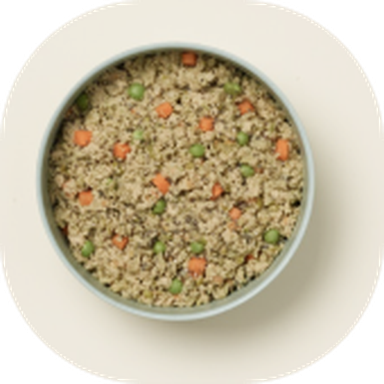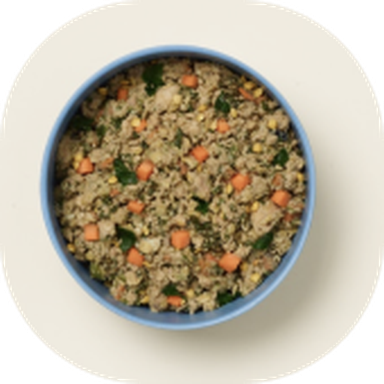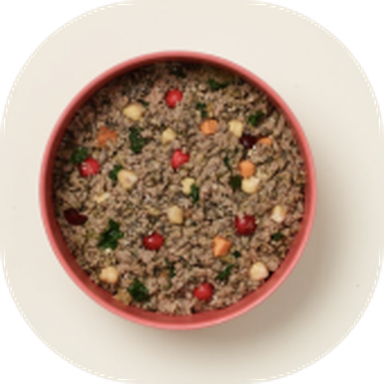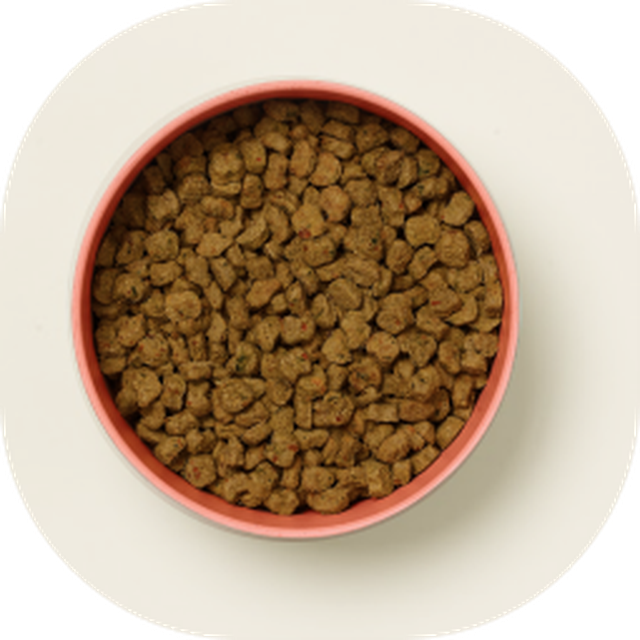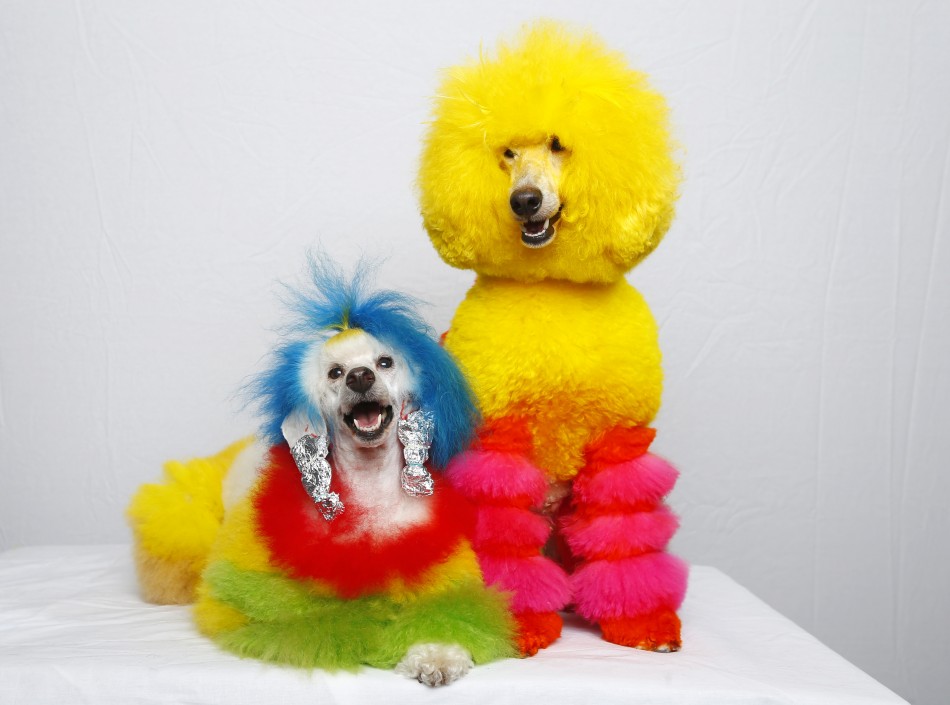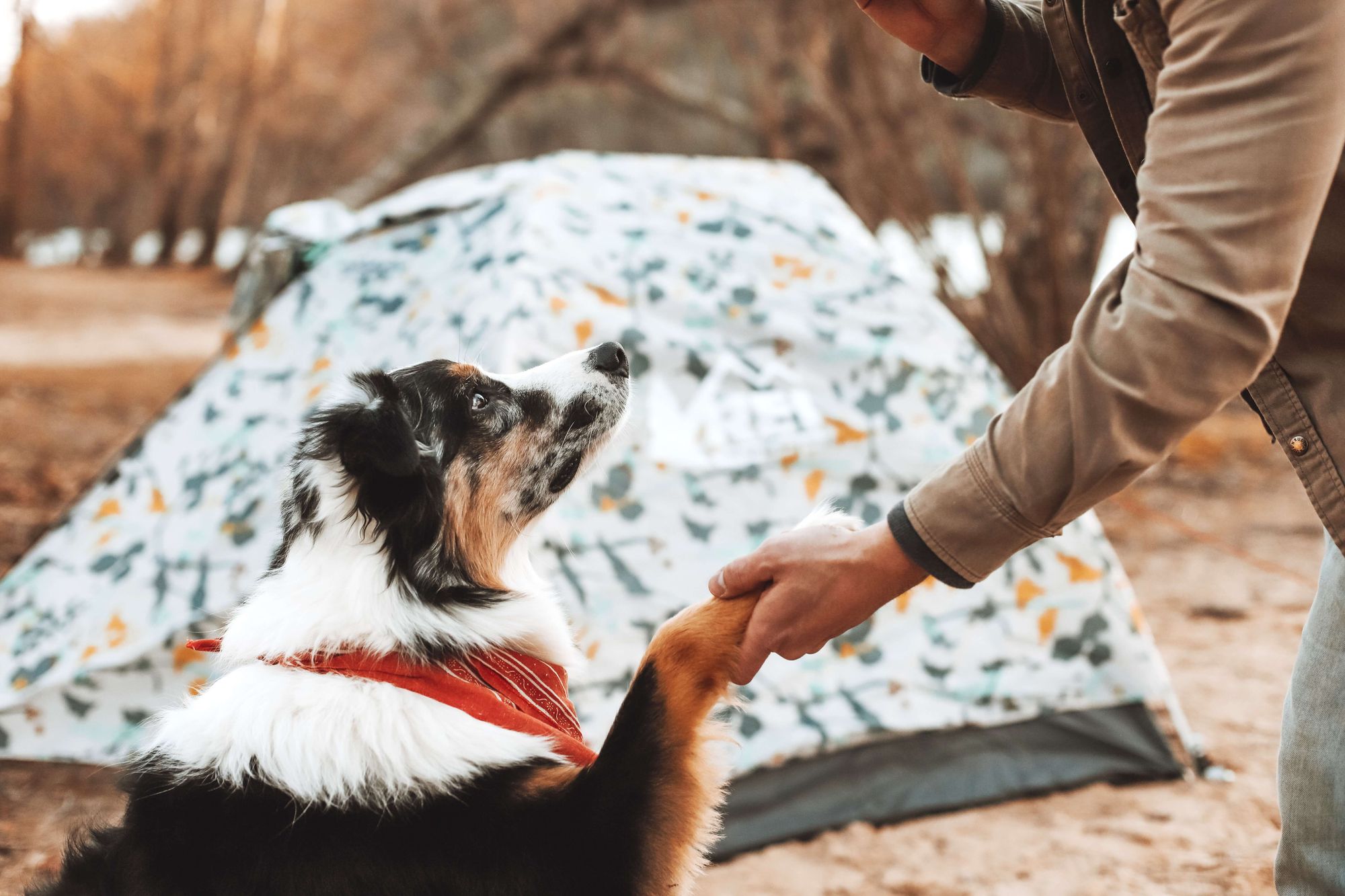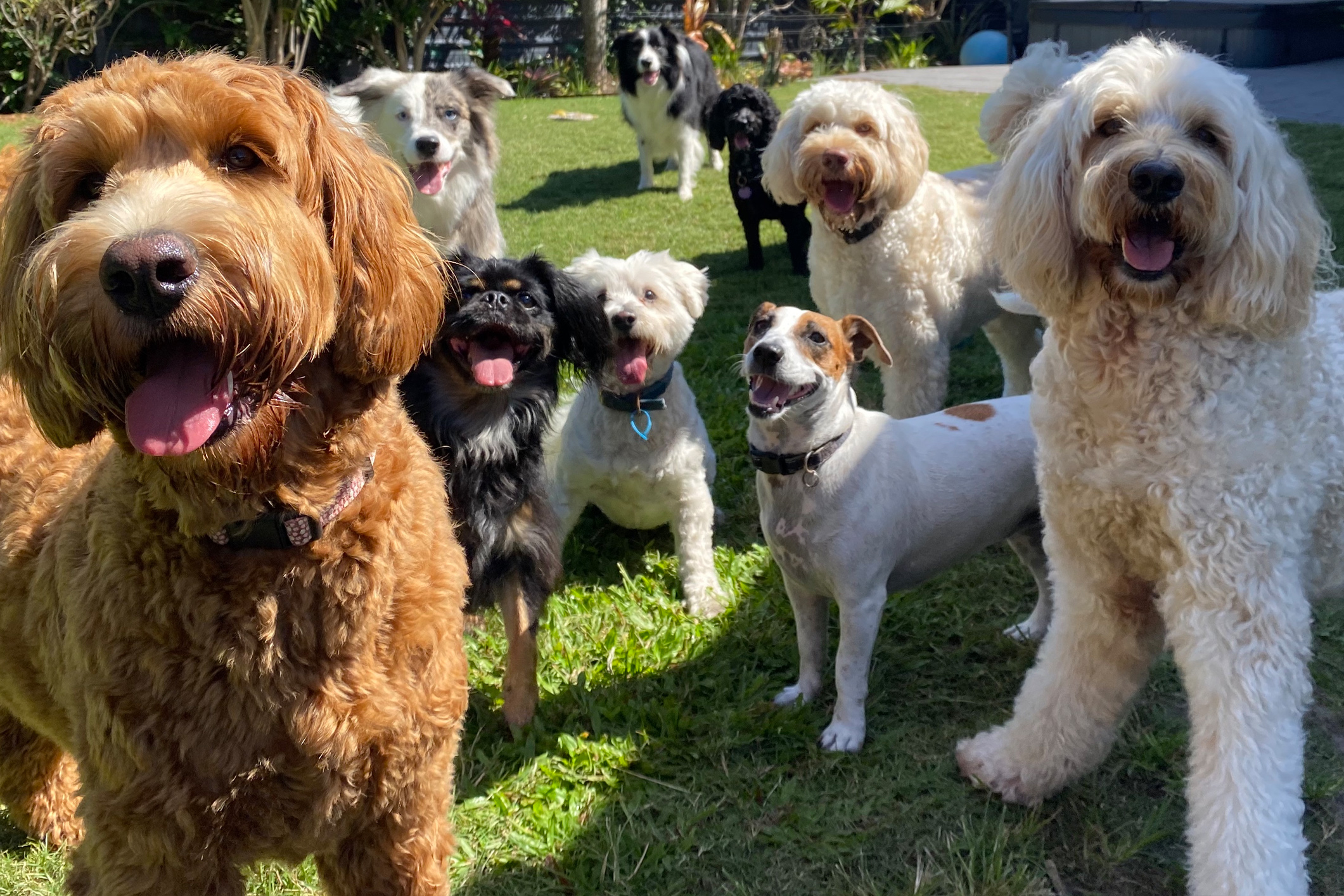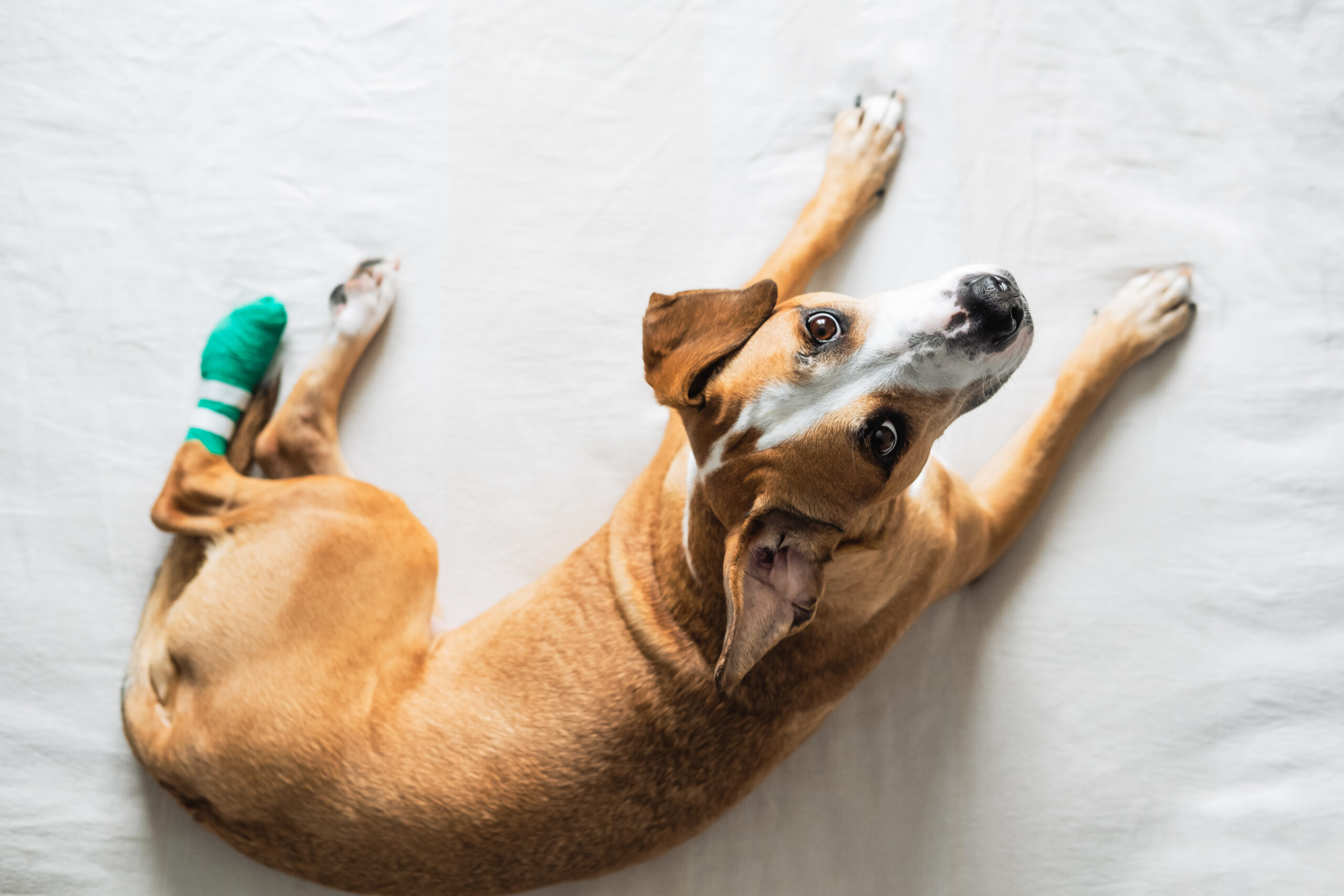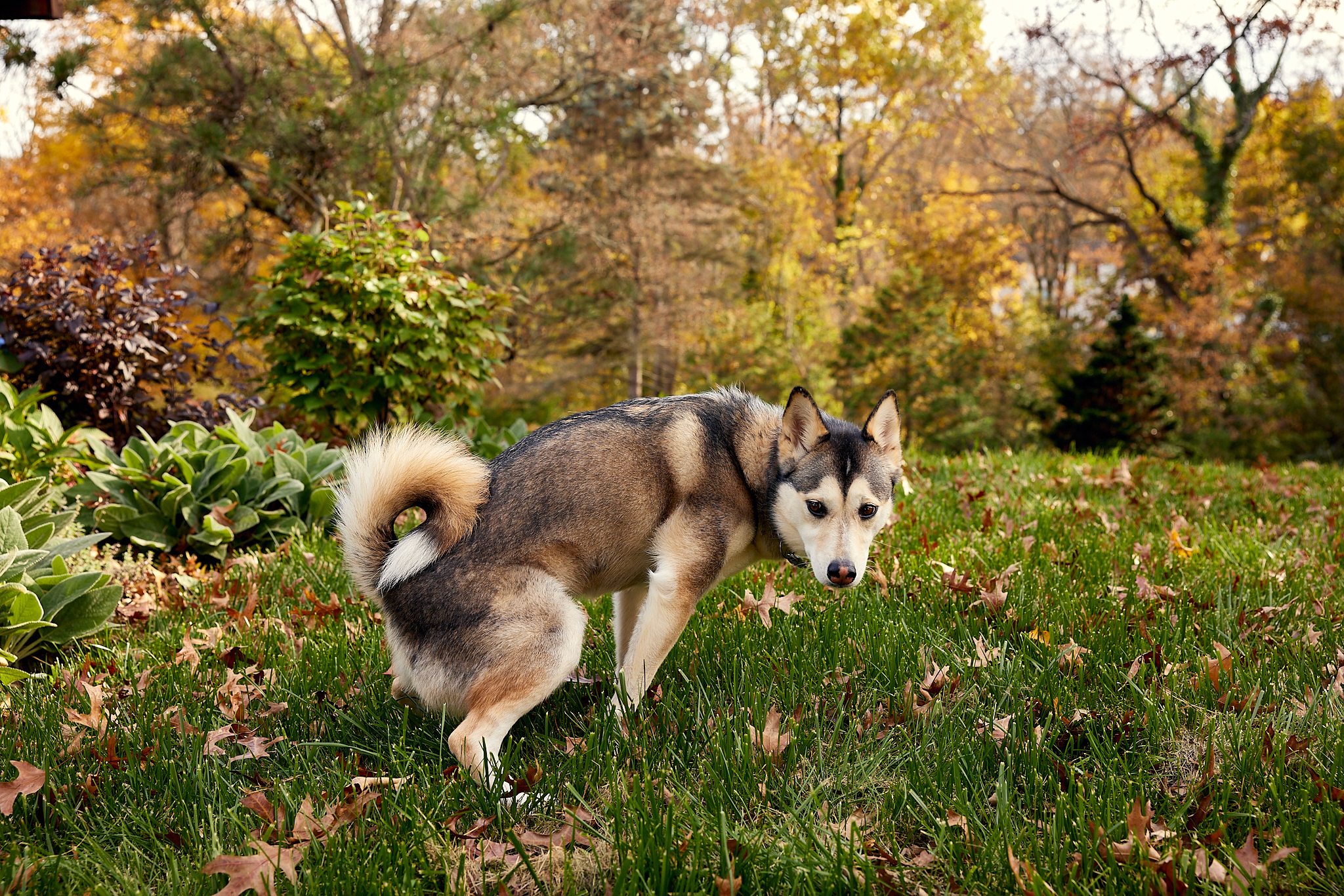Hey Ollie blog readers! We’re offering you an exclusive 60% OFF your starter box! Try now!
One of the most common myths about dogs is that they are truly colorblind and see the world in black and white. While they are best known for their powerful noses, dogs’ eyes actually do process some color.
Sure, they may not see color the way humans do, but it’s not as blah as it’s often portrayed. We looked at the latest research to help you better understand what your dog is seeing (and what they’re not).
What colors can dogs see?
In an article written for VCA hospitals, Drs. Ryan Llera, BSc, DVM and Lynn Buzhardt explain how dogs process color. They say, “Color is discerned by the nerve cells in the eye. The retina of the eye has two main types of cells—rods, which detect light levels and motion, and cones, which differentiate colors. Human eyes have three types of cones that can identify combinations of red, blue, and green. Dogs possess only two types of cones and can only discern blue and yellow – this limited color perception is called dichromatic vision.”
Since dogs can only “see” blues and yellows, what happens when they look at other colors? If they were human, they’d miss the sensations of red and green," Jay Neitz, a color vision scientist at the University of Washington said. He goes on to explain that "whether or not the dog’s sensations are missing red and green, or if their brains assign colors differently, is unclear."Some researchers believe that the color red looks more brownish or even black to our dogs. And when it comes to blues and purples, they may look the same (or very similar) as well.
Due to more study of how dogs’ eyes work, there is now evidence that dogs may be able to see colors humans cannot. A 2014 study published in the journal Proceedings of the Royal Society B found that the lenses in the eyes of a dog transmit significant amounts of ultraviolet light. Unlike human lenses which block out these wavelengths. So, it’s possible that our pups are actually seeing more blue light than we do and resulting colors that we can’t.
So what does this mean? For starters, we humans may see a wider variety of colors but our pups have an advantage when it comes to seeing in low light. They also are better than us at identifying moving objects, a skill that probably came in handy before dogs were domesticated since they needed to hunt for food. Today, this skill might be helpful to pups with jobs like livestock guardians.

How does time of day impact pups’ vision?
Dogs are what is known as crepuscular, which means that they tend to be most active at dawn and twilight.
While our (human) eyes have an abundance of cones that allow us to identify different colors, they work best in full daylight. Since dogs’ eyes have more rods than cones which distinguish between dark and light, their eyes work best when natural light is lowered (like in their most active periods at dawn and dusk). So if you’re wondering why you’re always stepping on your dog’s sharpest bones in the middle of the night, and your dog always seems to miss here’s your explanation. Sorry, we don’t have any good tips for avoiding this other than to put away those bones before dark!
Want to see what your dog might be seeing? There’s a website for that
Thanks to modern technology and a website created by András Péter, a neuroscientist and computer scientist you can test out seeing the way your dog does. The Dog Vision website provides some great visual explanations of what your dog sees. But it doesn’t stop there, the site will also allow users to upload their own photos and view with deuteranopia (red-green color blindness) and/or decreased brightness discrimination. The tool allows you to choose how much you wish to reduce the visual acuity. You can select between a factor of 1-8.
Based on this information and what you see if you try Dog Vision for yourself, you might be curious as to why your dog prefers their red ball. It’s likely not because of the color. It could be the texture, the scent, or the way it has just the perfect amount of bounce to it.
Think about what you’ve learned about your dog’s vision and ways you can support what they see – but don’t forget seeing is only one way your dog navigates the world. They can also learn a lot about the environment using their keen sense of smell, delicate whiskers, and tactile cues on their paws or skin.
The Ollie blog is devoted to helping pet parents lead healthier lives with their pups. If you want to learn more about our fresh, human-grade food, check out Ollie.com.
Tagged As:

The nutrition your dog needs,
the food they want.

Enjoying our articles? Subscribe our Newsletters and get new articles directly to your inbox
You might also like
9 September 2024
3 MINS READ
How to Choose the Right Dog Daycare
When it comes to finding the best dog daycare, it can be hard to know where to start. Read on for tips on what to look for, ask about, and keep in mind during your search.
by Ollie Pets
26 April 2024
4 MINS READ
How Often Should I Take My Dog To The Vet?
Routine veterinary care is important for your dog’s overall health—but how often should your pup visit the vet? We answer this question and outline common health signs that warrant a veterinary…
by Ollie Pets
28 February 2024
6 MINS READ
Why Do Dogs Eat Poop & How to Stop It
Does your dog partake in poop? We get to the bottom of this unusual behavior, including its medical and behavioral causes, and how to address it.
by Ollie Pets

